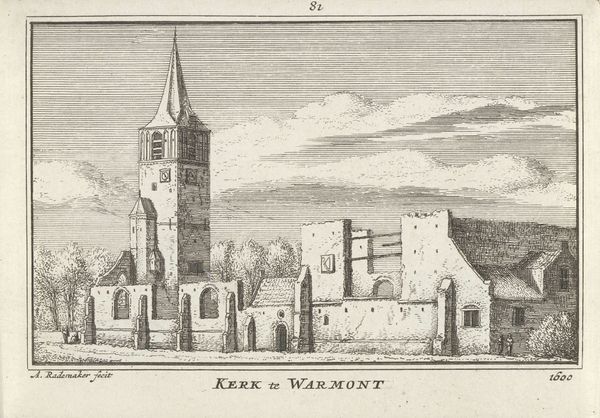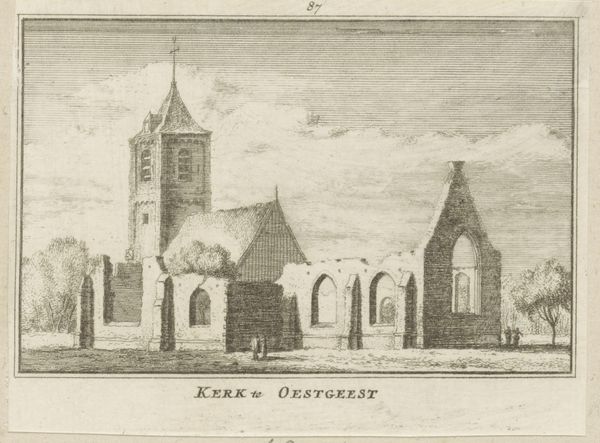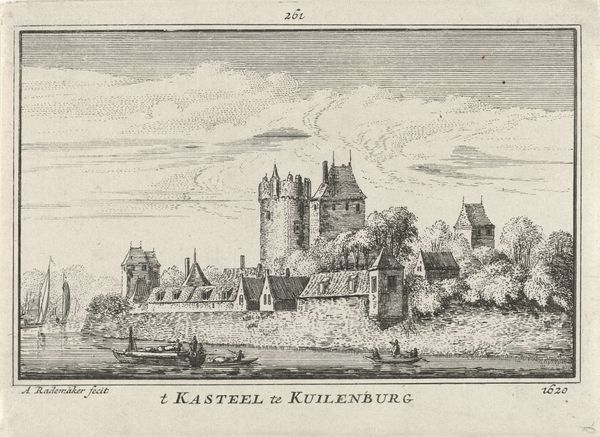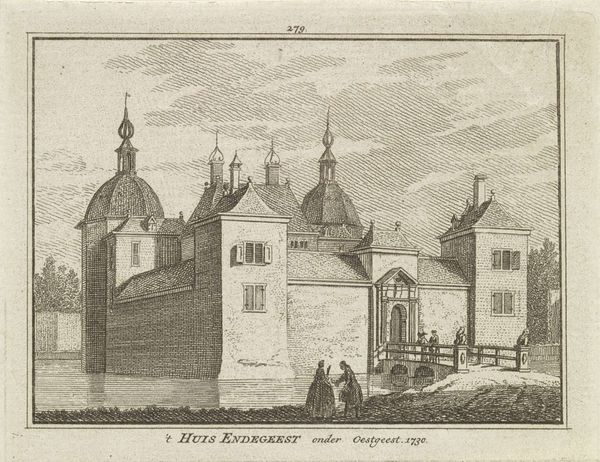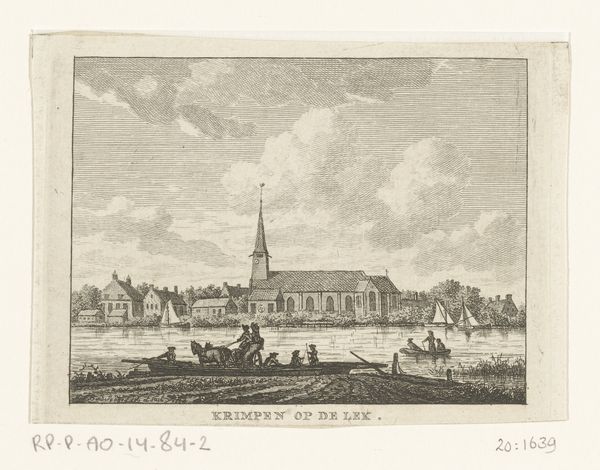
print, etching, engraving
#
dutch-golden-age
# print
#
etching
#
old engraving style
#
landscape
#
cityscape
#
engraving
Dimensions: height 80 mm, width 115 mm
Copyright: Rijks Museum: Open Domain
This print of St. Aldegundiskirche in Emmerik was made by Abraham Rademaker. Look closely, and you’ll see the distinctive character of an etching. Lines are incised into a metal plate with a sharp needle, and then acid is used to bite the image. The quality of line is very different than in a drawing. Each has a crisp precision, a kind of graphic intensity. The etching process was well-suited to the rise of print culture in the 17th and 18th centuries. It enabled artists like Rademaker to make multiple impressions of their work, in effect mass-producing images for a growing market. And remember, each one of these prints took time and labor to create. From preparing the metal plate to carefully applying the ink, etching was skilled work that contributed to a complex economy of image-making. Thinking about the material and the making helps us understand the cultural value of prints like this one. They were both artworks and commodities, objects made for circulation and consumption.
Comments
No comments
Be the first to comment and join the conversation on the ultimate creative platform.



